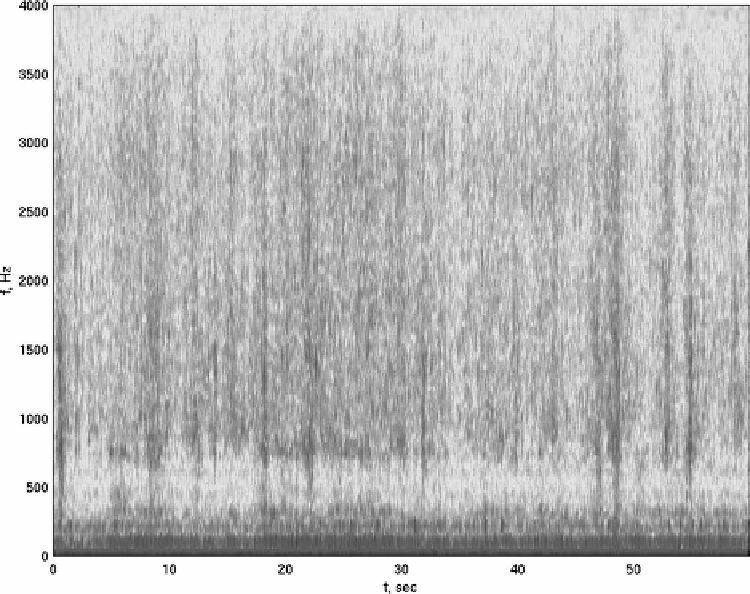Geoscience Reference
In-Depth Information
55 s
(
Figures 3.4
c-d are a zoom-in of
Figures 3.4
a-b). In both
Figures 3.4
a and
3.4
b, there are
well-defined peaks in the acoustic noise level associated with the breaking events. This
is in qualitative agreement with laboratory results by
Melville
et al.
(
1992
). In contrast
to laboratory breaking waves, different fractions of energy are apparently lost by field
breakers, and therefore the breaking noise impact above the background
in situ
ambi-
ent noise is not always evident in field acoustic time series. For instance, the breaking
event that was observed visually at
t
Figures 3.4
a-d plot time series of the digitised acoustic signal near
t
=
1 s and
t
=
53 s is not well defined in the time series in
Figure 3.4
b. It is, however, clearly seen in the corresponding acoustic noise spectrogram in
Figure 3.5
.
Figure 3.5
shows a spectrogram of this minute of the acoustic record. The spectrogram is
a time series of consecutive spectral densities computed over 256 readings of the acoustic
signal with a 128-point overlap; the segments were windowed with a Hanning window (see
Babanin
et al.
,
2001
, for further details). Values of the spectral density are shown using a
=
Figure 3.5 Spectrogram of one-minute record of acoustic noise recorded by a bottom-mounted
hydrophone during wave record 4 of
Table 5.2
. Darker crests correspond to dominant waves break-
ing. The breaker in
t
=
1 s is depicted in
Figures 3.2
and
3.4
a,c, and the breaker in
t
=
55 s in
Figures 3.3
and
3.4
b,d. Figure is reproduced from
Babanin
et al.
(
2001
) by permission of American
Geophysical Union

Search WWH ::

Custom Search